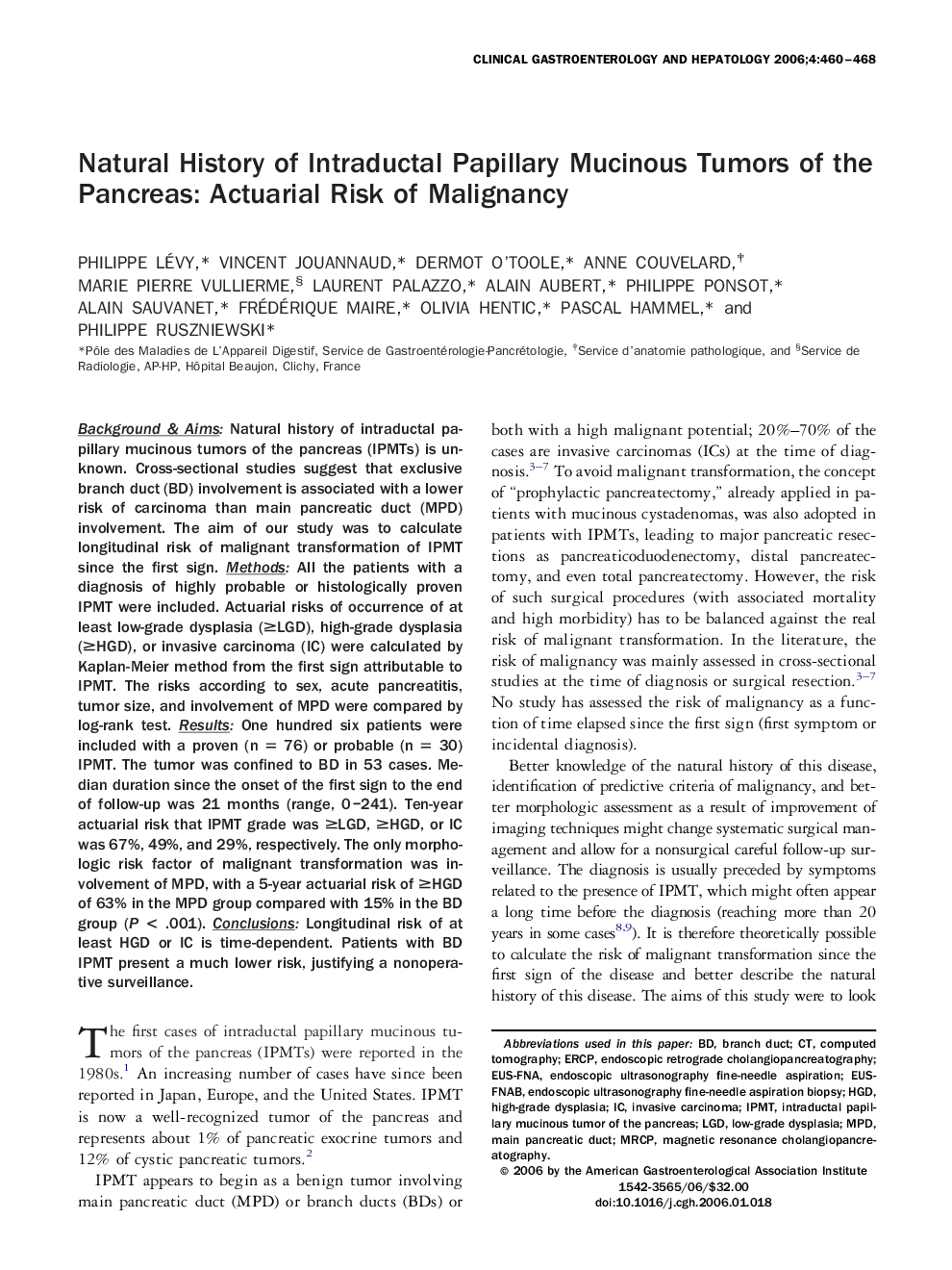| Article ID | Journal | Published Year | Pages | File Type |
|---|---|---|---|---|
| 3285514 | Clinical Gastroenterology and Hepatology | 2006 | 9 Pages |
Abstract
Background & Aims: Natural history of intraductal papillary mucinous tumors of the pancreas (IPMTs) is unknown. Cross-sectional studies suggest that exclusive branch duct (BD) involvement is associated with a lower risk of carcinoma than main pancreatic duct (MPD) involvement. The aim of our study was to calculate longitudinal risk of malignant transformation of IPMT since the first sign. Methods: All the patients with a diagnosis of highly probable or histologically proven IPMT were included. Actuarial risks of occurrence of at least low-grade dysplasia (â¥LGD), high-grade dysplasia (â¥HGD), or invasive carcinoma (IC) were calculated by Kaplan-Meier method from the first sign attributable to IPMT. The risks according to sex, acute pancreatitis, tumor size, and involvement of MPD were compared by log-rank test. Results: One hundred six patients were included with a proven (n = 76) or probable (n = 30) IPMT. The tumor was confined to BD in 53 cases. Median duration since the onset of the first sign to the end of follow-up was 21 months (range, 0-241). Ten-year actuarial risk that IPMT grade was â¥LGD, â¥HGD, or IC was 67%, 49%, and 29%, respectively. The only morphologic risk factor of malignant transformation was involvement of MPD, with a 5-year actuarial risk of â¥HGD of 63% in the MPD group compared with 15% in the BD group (P < .001). Conclusions: Longitudinal risk of at least HGD or IC is time-dependent. Patients with BD IPMT present a much lower risk, justifying a nonoperative surveillance.
Keywords
Related Topics
Health Sciences
Medicine and Dentistry
Gastroenterology
Authors
Philippe Lévy, Vincent Jouannaud, Dermot O'Toole, Anne Couvelard, Marie Pierre Vullierme, Laurent Palazzo, Alain Aubert, Philippe Ponsot, Alain Sauvanet, Frédérique Maire, Olivia Hentic, Pascal Hammel, Philippe Ruszniewski,
